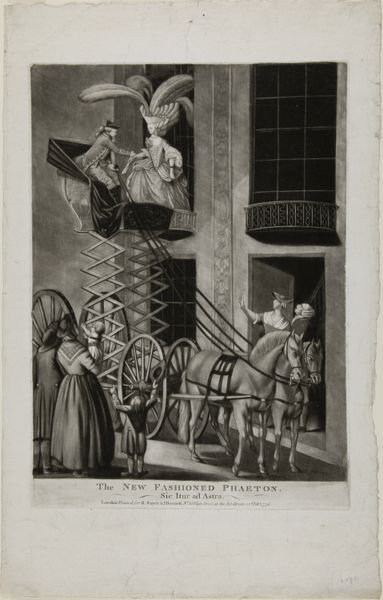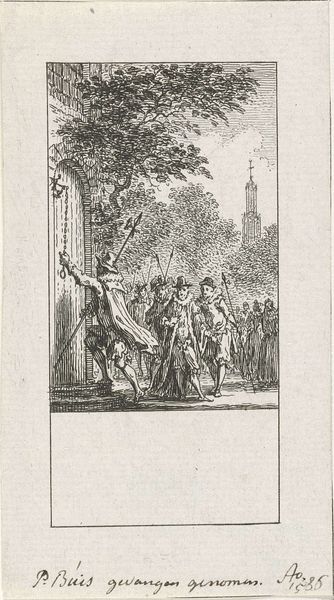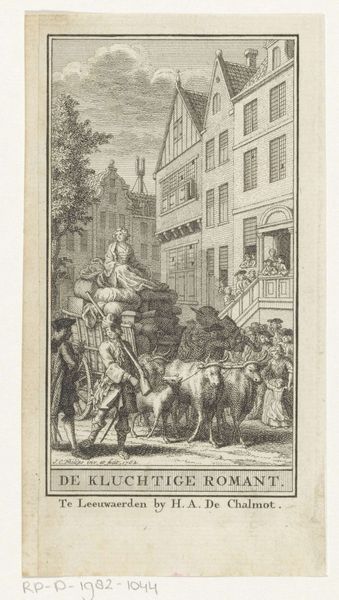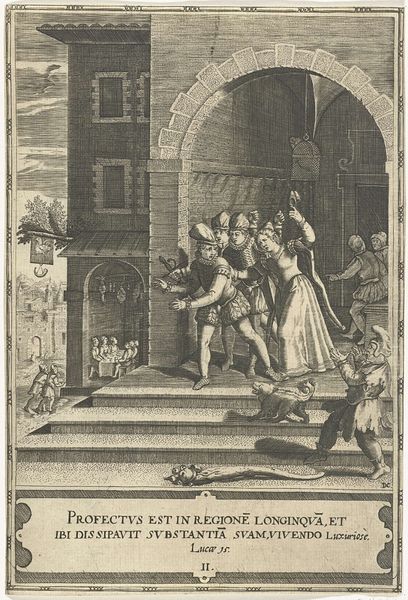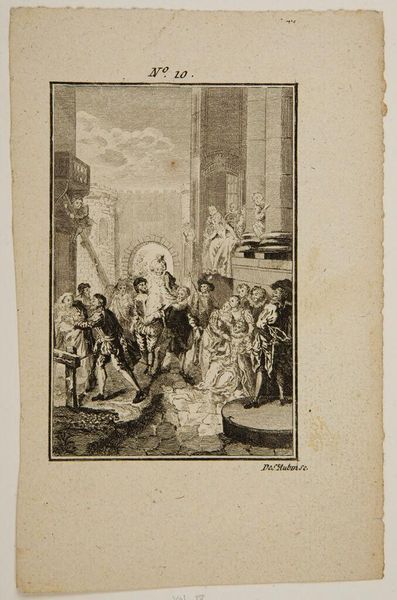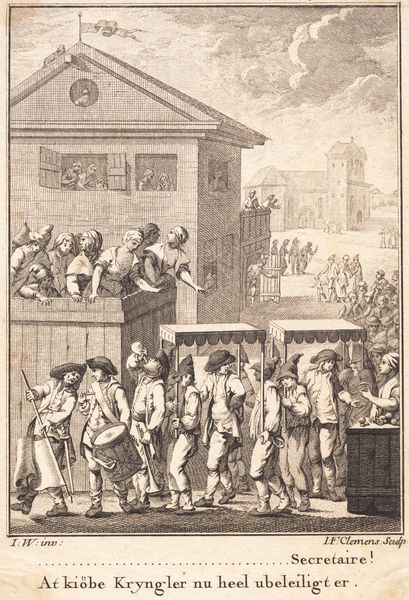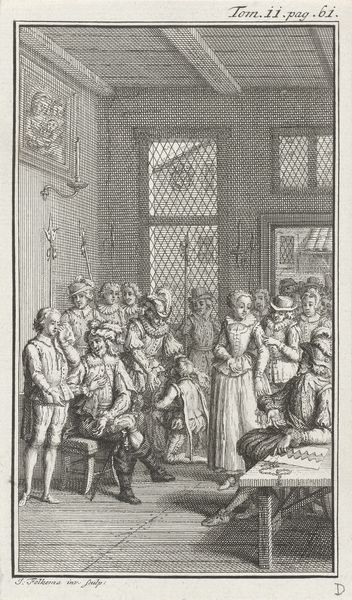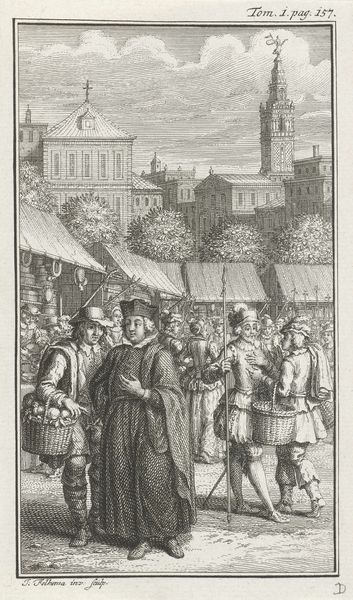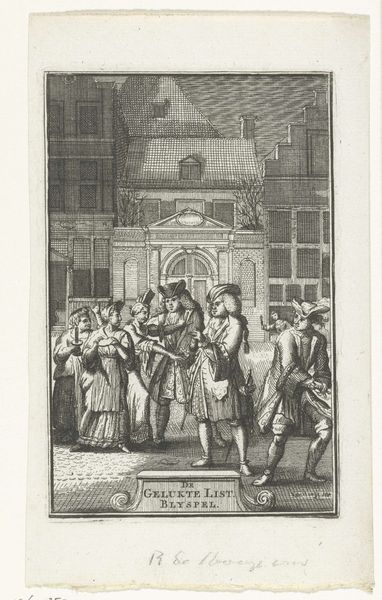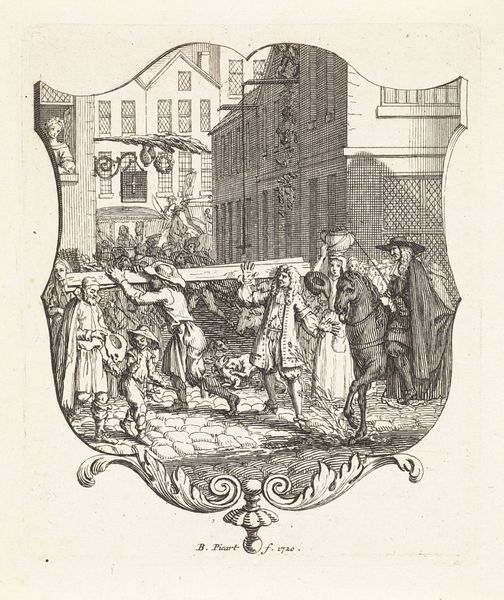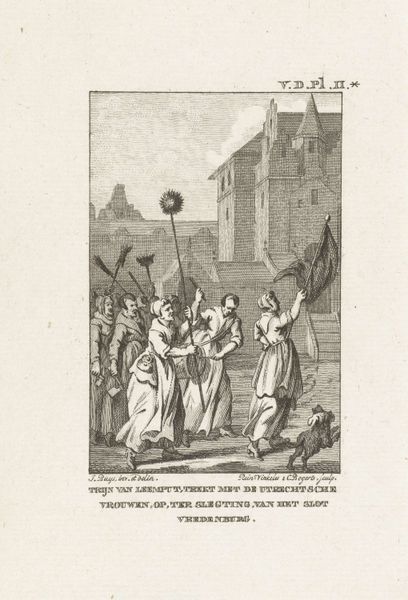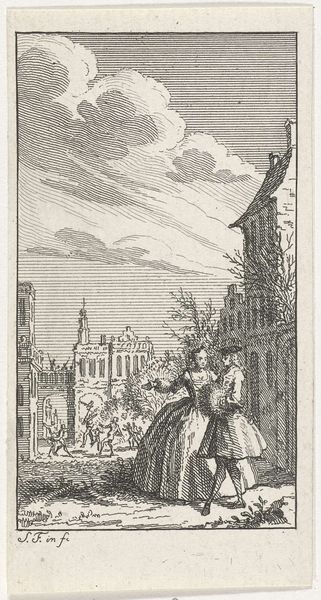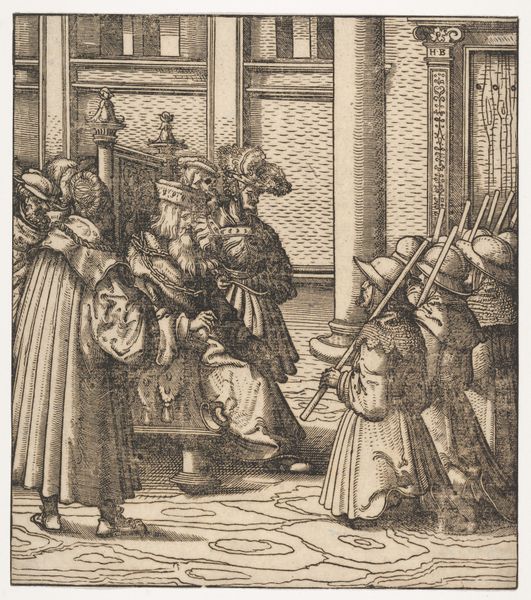
print, engraving
#
dutch-golden-age
# print
#
old engraving style
#
figuration
#
line
#
cityscape
#
genre-painting
#
engraving
#
realism
Dimensions: height 145 mm, width 92 mm
Copyright: Rijks Museum: Open Domain
Editor: This is "Procession with the Pentecost Flower in Schermerhorn," an engraving made around 1750 by Abraham Zeeman. There’s such a lively, festive feeling here – you can almost hear the music. What can you tell me about its context? Curator: This engraving offers a window into the social rituals of 18th-century Dutch village life. The "Pinksterblom," or Pentecost Flower, procession, wasn't just a quaint tradition; it was deeply interwoven with community identity and seasonal rhythms. Think of it as a kind of public performance, reinforcing social bonds and expressing shared values. Notice the way Zeeman positions the central figure, elevated and adorned – what statement do you think it is making in regards to that particular person's identity? Editor: It seems like an important social role, almost ceremonial, given how they're being carried through town. Is that fair to say? Curator: Absolutely. These kinds of processions were carefully staged. The choice of who would be the "Pinksterblom," the clothing they wore, the route they took – everything would be imbued with meaning. This public display helps us to understand how visual culture actively shaped societal beliefs at the time, doesn't it? Editor: It really does! I hadn't considered how staged such "everyday" scenes might have been. I’ll look at genre scenes in a completely new way now. Curator: That’s the beauty of looking at art through a historical lens. What initially appears simple often holds surprisingly complex narratives about power, belief, and social practice.
Comments
No comments
Be the first to comment and join the conversation on the ultimate creative platform.
